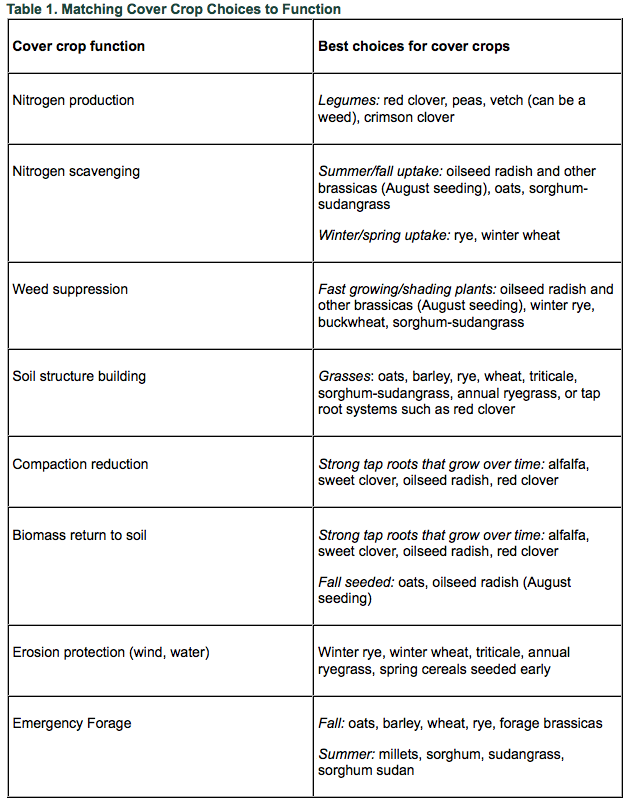|
Click here to check out a cover crop decision tool created by several universities. |
The 2011 planting season will become the new bookmark for comparing backward spring conditions, but no one wants to be reminded of this every day when travelling past unplanted fields.
Planting cover crops in those fields can provide several benefits and can help prepare a field for timely wheat planting this fall.
Cover crops serve many different functions, as shown in Table 1, from helping with weed control to building soil to scavenging nitrogen from manure or nitrogen applications.
There are many cover crops to choose from, such as legumes, brassicas, broadleaves and grasses, and within each of these categories are several different species. For more on selecting cover crops, see Preventive planting options for cover crops.
Please contact your insurance agent if you are planting cover crops into crop insurance acreage.
An example of a cover crop that is of interest to some is buckwheat. Buckwheat is a short-season cover crop that reaches maturity in about 80 days. In organic production buckwheat helps to:
• suppress weeds,
• attract beneficial insects such as bees,
• extract soil phosphorus that can be utilized by the following crop, and
• loosen compacted topsoil.
Buckwheat will produce seed in as little as six to eight weeks. Buckwheat does not thrive well under hot-dry conditions.

Dale R. Mutch and Christine Brown, Michigan State University Extension; Ontario's Ministry of Agriculture, Food and Rural Affairs






Post a comment
Report Abusive Comment